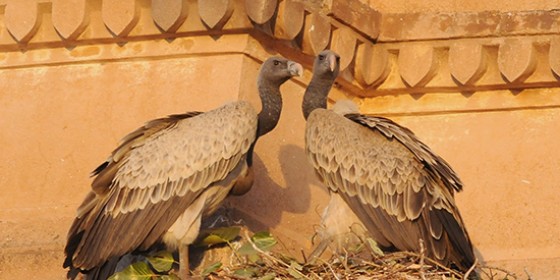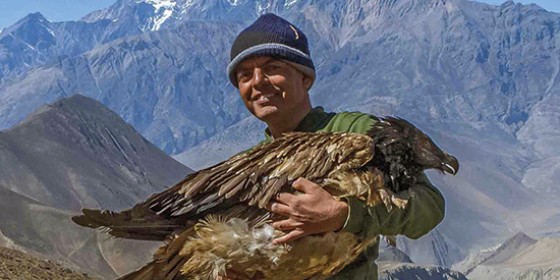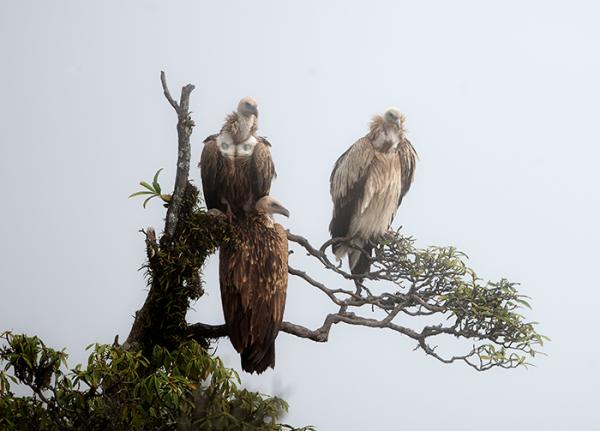Vultures are masters at scouring the landscape to quickly pinpoint fresh carcasses—a critical food source for them, but a bacteria-laden hazard to humans. Vultures’ adaptations—high stomach acidity, crushing bill strength, and featherless heads for staying clean—guarantee efficient clean-up, so disease-spreading scavengers like rats, feral dogs, and flies don’t multiply.
Three vulture species in Asia were destined for extinction in less than a decade, a catastrophe unprecedented since the loss of billions of passenger pigeons in the last century. Peregrine Fund biologists struggled to understand how tens of millions could die so rapidly, and through meticulous forensic investigations discovered the answer in 2003: an inexpensive, readily-available drug called diclofenac sodium had been introduced in the region for treating sick cattle. Consuming even small traces of diclofenac in cattle carcasses causes rapid kidney failure in vultures. Since only four percent of an estimated 500 million cattle in India are for human consumption, the availability of carrion for scavengers is significant.
Threats to Asian Vulture species

Munir Virani

Simon Thomsett
The Peregrine Fund advocated along with conservation and government partners to ban veterinary use of diclofenac in Nepal, Pakistan, and India, and bans were enacted three years later. To measure the bans’ effects, we monitor 450 pairs of Long-billed Vultures in the Indian states of Madhya Pradesh and Rajasthan. The population stabilized in the five-year period after the ban was enacted, leading us to believe a positive trend had begun; but more recently we’ve observed declines, pointing to a need for vigilance and further action.
Diclofenac is still available for humans, and can easily be misused for treating livestock.
At least seven other veterinary drugs on the market are potentially toxic to vultures, and new drugs may appear without thorough testing. We work closely with partners in south Asia who are identifying vulture-safe alternatives and encouraging tighter regulation of toxic veterinary drugs. We also track 13 Bearded Vultures (photo above) to study their habits and territories, and we support graduate students throughout south Asia to increase our capacity to deal with future crises.
In 2017, the United Nations Convention on Migratory Species recognized The Peregrine Fund in a Raptors Memorandum of Understanding. The Convention seeks to halt population declines of 15 vulture species across Africa and Eurasia and recommends 124 actions for countries to restore numbers by 2029.






